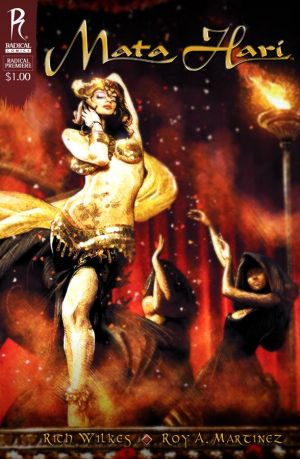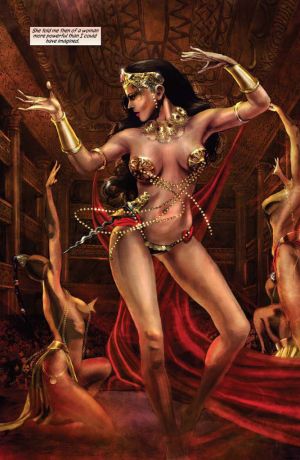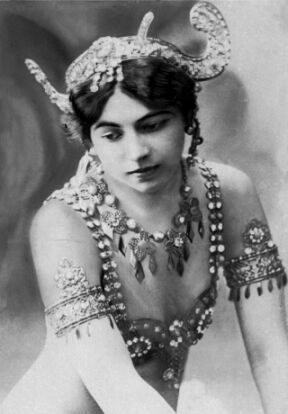|
|
 |
Mata Hari sets the stage for a speculative imagining in sequential art form of the true tale of Mata Hari’s life, lifestyle, and position as either the ultimate femme fatale or innocent scapegoat. Taking what Wilkes himself describes as “extreme liberties” with Mata Hari and General Nivelle’s histories, Wilkes is setting the stage for a tragic tale of incompetence and injustice with Mata Hari at the center. The liberties Wilkes takes with Mata Hari’s story appear to be possible. It’s an interesting alternative to the story told by those writing the history of the time period. The same ones who tried, convicted, and executed Mata Hari for a crime that she might have been completely unqualified and unable to perform.
 |
Framing this revisionist and speculative alternate history of Mata Hari’s story within the tale of a young Russian girl who discovers documents that tell an interesting story amongst her dead uncle’s belongings, allows Wilkes to set the stage and provide a basis for launching into a revision of Mata Hari’s story. He does a great job introducing Mata Hari, the historical figure, to his readers as well as laying the basis for his version of her tale as a scapegoat for the failed Spring Offensive of 1917. Artist Roy Allen Martinez and colorist/painter Drazenka Kimpel manage to give vivid and striking, as well as imaginative, life to Wilkes’ introduction of his version of the truth of Mata Hari’s life, and its untimely end. They manage to convey the seductive look and talents of Mata Hari and her stage show while providing a striking visual history lesson of World War I and its effect on world geopolitics and culture that extends into contemporary times.
 |
Overall, Mata Hari #0, as it is technically labeled, is a strong work of sequential art that stands well on its own, but does a fantastic job of enticing its readers to look forward to this alternative take on one of history’s most desired and reviled, yet potentially innocent, female criminals. Like most books published by Radical Publications, Mata Hari #0 and the forth coming (Spring 2011) Mata Hari “128 page, full color, hardcover graphic novel” both look to be tailor made to be adapted to the big screen ( I picture Mila Kunis in the title role—okay, so I’ve got a minor star crush on her). Based upon the quality of Mata Hari #0, and the peek it gives us into the potential quality of the graphic novel, it’s one book that should scream “film adaptation,” and rightly so.
© Copyright 2002-2019 by Toon Doctor Inc. - All rights Reserved. All other texts, images, characters and trademarks are copyright their respective owners. Use of material in this document (including reproduction, modification, distribution, electronic transmission or republication) without prior written permission is strictly prohibited.

